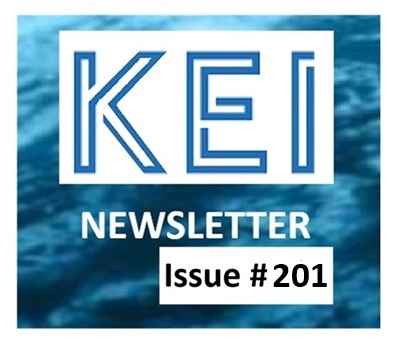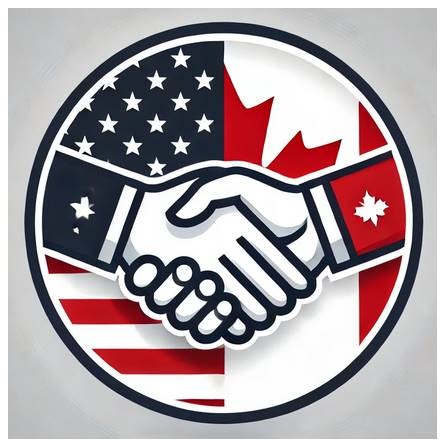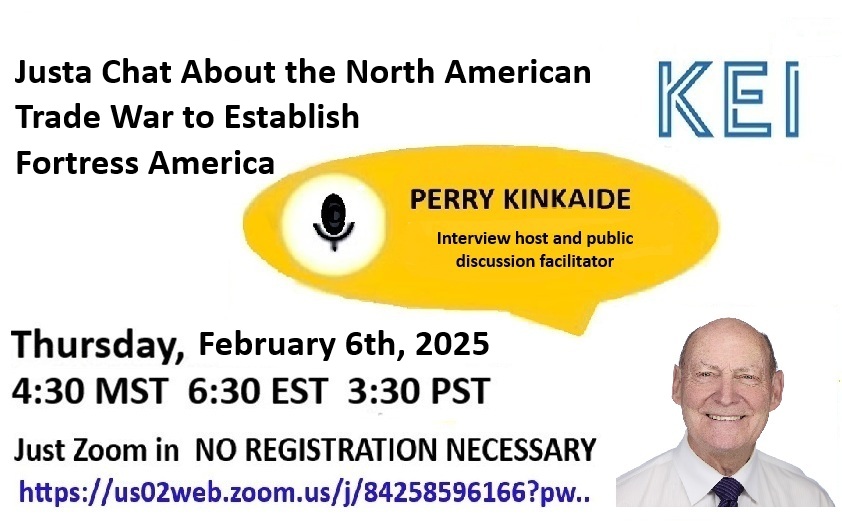|
|
DIRECTORY | ||
|
Library: |
Action: |
Webinar recording: Getting to YES with the US |
|
|
Welcome 2025
Editor - Perry Kinkaide |
Over my lifetime I have watched organizations transition from managing the status quo, to managing change, and now managing the rate of change. Of late things are getting out of hand, our social structures: family, community, corporation, organization, nation, have lost their resilience, the capacity to maintain the status quo. And, as if advances in technology - AI, geopolitical conflicts - the Ukraine, Africa, the Middle East; socio-demographic shifts - declining birth rates and migration; inflation, debt and the economy; and extreme environmental events, weren’t enough, we now have to contend with the US repositioning itself as a global protector and economic stabilizer and initiating a disruptive trade war. The following article discusses Fortress America, introduced by Elaine Tyler in her 2017 book Fortress America: How We Embraced Fear and Abandoned Democracy and expanded upon by Bill Jones in KEI's webinar Thursday HERE and dinner discussion Friday, for explaining the intent of the new U.S. President by initiating a tariff war on Canada - it's neighbour and best friend, the implications, and the options. - Editor |
||
|
In Pursuit of Fortress America: Trump Warns Canada - Tariffs Tuesday As the world transitions into 2025, signs of chaos and confusion are more apparent than ever. Reflecting on decades of societal evolution, from managing the status quo to adapting to rapid changes, it is clear that our traditional structures—from families to nations—are struggling to maintain stability amid the relentless pace of transformation. This instability has been catalyzed by the United States' strategic pivot towards "Fortress America", a move that marks a profound shift in its global role, from protector of international order to a more insular, protectionist stance. The Genesis of Fortress America. The Fortress America doctrine has taken shape against a backdrop of significant global disruptions: rapid technological advancements, geopolitical strife, and catastrophic environmental incidents. The U.S. response to these challenges was underscored by the inauguration of a new president in 2025, who immediately enacted an unprecedented 150 executive orders. Among the most consequential moves was the threat of imposing sweeping tariffs:
These measures reflect the U.S.'s growing concerns over trade imbalances—which include a declared, though somewhat exaggerated, $200 billion annual trade deficit with Canada—and the escalating costs of maintaining global security, with over $100 billion spent annually on securing maritime trade routes alone. Canada's Pivotal Moment: Internal Challenges and Opportunities. For Canada, the emergence of Fortress America is both a crisis and retaliating with it's own tariffs pegged initially at $20 billion and rising a few weeks later to $130 billion and as a catalyst for change. The imposition of tariffs threatens economic stability on both sides of the border but also forces a long-overdue reevaluation by Canada of internal economic policies and dependencies. One of the most glaring paradoxes in Canada's economy is the inefficiency of inter-provincial trade barriers, which cost the country an estimated $100 billion annually in lost productivity. Canada, which prides itself on free trade internationally, struggles to facilitate the movement of goods and services within its own borders. The ease of north-south trade with the U.S. compared to east-west trade within Canada has long been an issue, with industries and consumers bearing the costs of fragmented regulations and economic silos. When resolved, these inefficiencies will significantly strengthen Canada’s economy and reduce its dependency on U.S. trade. Indications are that these barriers will be among the first to go. Side note. Thank you Donald Trump; no Canadian Prime Minister has been able to achieve this. The "51st State" Debate: Myth or Warning Sign? The idea that Canada could become the 51st U.S. state is often dismissed as rhetoric, but the mere discussion of it highlights a deeper issue: how Canada defines and asserts its sovereignty amid shifting geopolitical dynamics. While annexation is unrealistic, the increasing economic entanglement between the two nations and Canada’s vulnerability to U.S. trade policies underscore the need for a more independent and diversified economic strategy. By taking decisive action to strengthen its economic sovereignty, Canada defends itself from drifting further into U.S. economic orbit without the ability to negotiate from a position of strength. Again, thank you Mr. President. Exploiting the Economic Potential of Canada’s North. One of the most significant features of Canada's economy is it's resources that serve as an effective counter-force to punishing tariffs but also an opportunity for Canada in this new geopolitical landscape to further develop its northern territories.
Strategic Development Priorities for Canada’s North:
However, economic potential alone is not enough—security is also a growing concern. Arctic Security: A Critical Component of Sovereignty. As Canada looks to capitalize on its northern economic potential, it must also confront growing geopolitical threats in the Arctic.Russia and China have significantly increased their Arctic presence, with Russia deploying more than 50 military bases across the region. These threats are shared by the United States that has expressed interest in Arctic security, recognizing it as a potential flashpoint for future conflicts. Strategic initiatives to counter these threats include:
Envisioning Fortress North America. While Fortress America signals economic retrenchment, a broader vision of Fortress North America could strengthen economic integration while preserving national sovereignty. Should the pending threat of a tariff war be avoided and or short lasting, the "friendship" would be renegotiated including several policy recommendations for further unifying North America:
However, there remains a real risk that the U.S. will execute the tariff threat with Canada retaliating with it's own economic arsenal and a media blitz of the US public that has shown little awareness or when surveyed, support for initiating a war with Canada - viewed as the US's best ally. The Consequences of a Trade War. Both Canada and the United States will suffer significant economic consequences of any protracted trade war:
Charting a Collaborative Path Forward. To prevent this outcome, the U.S. must back off, with both the U.S. and Canada prepared to engage in proactive economic diplomacy. This would most likely include re-opening ahead of time the US:Canada free trade agreement. As the global order shifts, Canada faces a defining moment. Will we see deeper economic integration or increasing divergence from the U.S.? The concept of Fortress North America offers a strategic framework that balances economic strength, security cooperation, and national sovereignty. By resolving internal inefficiencies, capitalizing on northern opportunities, securing Arctic sovereignty, and maintaining diplomatic leverage, Canada can transform current challenges into opportunities for long-term resilience and prosperity. While good fences make good neighbors, great partnerships build lasting prosperity. The decisions made in the next few days today will shape the future of Canada-U.S. relations for decades to come. - Editor Editor@KEInetwork.net
|





